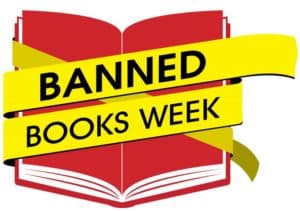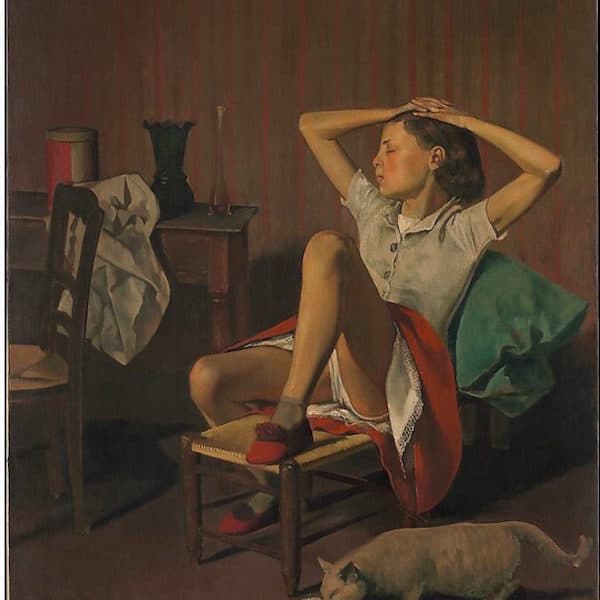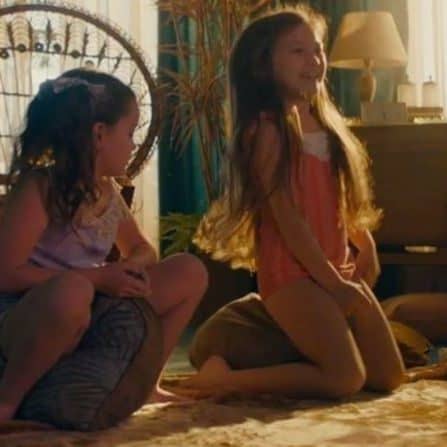Lolita was never officially banned in the United States, although it was banned in France where it was first published in 1955, and in several other countries. Yet today, although the novel remains unlikely to be formally censored, the idea of its private or “voluntary” censorship has gained fresh currency. In 2018, Professor Anne Dwyer, who teaches Russian literature at Pomona College, was required to defend her teaching of the book in a course on its author Vladimir Nabokov, on the grounds that by doing so she was “perpetuating trauma and may even be perpetuating rape culture.”

It is gratifying that our society has woken up to how widespread sexual abuse really is, and the harms that it can cause to adults and children alike. Unfortunately, this hasn’t been accompanied by similar progress in understanding the causes of child sexual abuse and the techniques for its prevention. On the contrary, our ability to engage in well-meaning, factual discussions of the sexuality of minors and the psychology of their abusers has never been more precarious. Following the passage of the sex trafficking law FOSTA, risk-averse Internet platforms are self-censoring articles about child sexual abuse and its prevention and even banning mental health professionals from discussing the topic.
The permissible boundaries of art touching on child sexual abuse is also being critically reexamined, with celebrities being sacked even for their poor taste jokes, while morals campaigners are calling for foreign Netflix movies to be banned as child pornography, and artworks to be taken down from the Met. Again, the fact that these conversations are taking place reflects a welcome increase in public awareness of the problem of child sexual abuse—but a lack of understanding of how and where censorship fits in as a solution.
What better time than Banned Books Week to consider the question: as a child protection organization in the #metoo era, should we still defend Lolita?
Censorship and child protection are at odds
To answer that question, we have to reverse it: what are the possible justifications for censoring Lolita? One common answer given not only in the case of Lolita but in the other cases of censorship mentioned above is that by censoring a book (or a blog, or a joke), we can prevent the ideas that it contains from leaching out into society and being enacted in real life. In other words, that works such as Lolita that discuss or depict child abuse should be banned because they might instruct or encourage real-life child abusers.
This justification is factually dubious, since Lolita hardly condones or glorifies the actions of its protagonist, but for now let’s assume that this fear is justified. Certainly, people’s behavior can be influenced by what they read, and just as certainly there are some naïve readers (including young readers) who romanticize the abusive relationship between Humbert and Lo, and might be influenced to emulate it, with predictably tragic results.
Does this mean that we should censor the novel, or rather that we should make it freely available, so that it can be critiqued in literature classes such as those that Professor Dwyer teaches, used as a teaching moment in comprehensive sex education programs, and discussed on the sorts of Internet platforms that those who would romanticize the abuse might frequent?
Obscenity, child pornography, and the Constitution
At least so far as government censorship is concerned, the question is moot. It is clear enough (at least for now) that the U.S. First Amendment does not authorize the government to censor a work like Lolita, as the cases in which such censorship could be justified are exceedingly narrow. In a seminal Supreme Court case about motion picture censorship, Burstyn, Inc. v. Wilson, Justice Clark found that even a work that might “possess a greater capacity for evil, particularly among the youth of the community,” there could be no such prior restraint on speech.
But there are two relevant exceptions to this general rule, and the limits of both exceptions are increasingly being tested in ways that should concern free speech advocates. First, speech may be censored if it is obscene. The test of obscenity established by the U.S. Supreme Court in the 1973 case of Miller v California requires all three of the following tests to be met: 1) the “average person, applying contemporary community standards,” finds that it “appeals to the prurient interest”; 2) the work portrays sexual conduct “in a patently offensive way”; and 3) the work “lacks serious literary, artistic, political, or scientific value.” What is “prurient” or “offensive” may be further defined in state law, and may also evolve over time along with changing social mores.
The second ground for the prior restraint of sexual speech is if it falls within the category of child pornography. Although it might be assumed that all child pornography would also constitute obscenity, in the case of New York v Ferber the Supreme Court decided that this is not necessarily so. The court found that the “prevention of sexual exploitation and abuse of children constitutes a government objective of surpassing importance”, and that this justified the censorship of depictions of minors engaged in sexual activity, or lasciviously displays of their genitals, without the need to also prove the Miller test of obscenity. Importantly, this means that the literary or artistic merit of the depiction are not considered—which is how it should be, since we accept that even animals should not be harmed in making a motion picture, regardless of how artistic it is.
Thus in Miller and Ferber the Supreme Court had carefully distinguished between child pornography (for which the constitutional basis for censorship is the protection of the children depicted in the material), and obscenity (for which the constitutional basis for censorship of a work is that it contravenes society’s moral standards, and that the work has no redeeming expressive value).
However these separate doctrines of obscenity and child pornography are rapidly merging, so that it is no longer as easy to discern the dividing line between what is abuse and what is art. For example whereas it had long been assumed that the written word alone would no longer be adjudged obscene, that hand-drawn images could not amount to child pornography, and that neither could depictions of minors fully clothed, each of these assumptions has been upended in recent years, leaving a new fog of uncertainty over exactly what is allowed in art.
Muddying the waters of child pornography and visual art
The first step in muddying the waters between art and abuse came in 1996, when Congress attempted to broaden the statutory ban on child pornography to include simulated depictions of children, thereby severing the connection with harm to a real child that had made the original ban constitutional. Accordingly, in 2002 in the case of Ashcroft v Free Speech Coalition, this extension of the ban was largely ruled unconstitutional by the Supreme Court, which ruled:
Virtual child pornography is not “intrinsically related” to the sexual abuse of children. While the Government asserts that the images can lead to actual instances of child abuse, the causal link is contingent and indirect. The harm does not necessarily follow from the speech, but depends upon some unquantified potential for subsequent criminal acts.
This decision is often misinterpreted to mean that there are no limits to how minors can be depicted sexually in art, but that isn’t the case; if the depictions also fall within the Miller test of obscenity, they can still be unlawful and may also be classed as child pornography under state law or under the federal PROTECT Act, which was passed in response to the Free Speech Coalition’s victory in the Ashcroft case.
Fans of Japanese manga (comic book art) received a wake up call in this regard when Christopher Handley, a collector of thousands of mostly non-erotic manga, pleaded guilty to a child pornography offense over a few items in his collection that depicted minors. Although scholars have argued that PROTECT is likely unconstitutional, Handley accepted a plea deal rather than appealing his conviction.
Taking this a step further, in July 2018 a prisoner who produced even crude hand-drawn pictures of a fictional child engaged in sex acts was convicted under state law of the production of child pornography by the Michigan Court of Appeals. Such prosecutions have further blurred the distinction formerly observed between child pornography (which directly harms children) and obscene art (which doesn’t, and which must therefore satisfy a tougher test to pass constitutional muster).
Another way in which the distinction between obscenity and child pornography has been blurred is through a series of court decisions that have expansively interpreted the definition of the latter. The question of what amounts to “lascivious display” was investigated in the case of U.S. v Dost, which established a six factor test intended to distinguish (for example) innocent bathtime or beachside photos of children from material intended to sexually objectify and harm them. Applying this test, even clothed minors depicted in an apparently sexual manner could be classed as child pornography, while full child nudity in an appropriate context might not be (and indeed might even be exhibited in the Gugenheim or awarded a Pulitzer).
Even clothed minors depicted in an apparently sexual manner could be classed as child pornography, while full child nudity in an appropriate context might not.
Unfortunately—further distancing the Dost test from the touchstone of child protection established in Farber—none of the six factors that it established directly relates to harm to the child. Instead, they involve an assessment of factors intended to establish how “porny” the depiction is, such as its framing, the child’s pose and clothing, the setting in which it is taken, along with—discomfitingly—whether the depiction “suggests sexual coyness or a willingness to engage in sexual activity” or “is intended or designed to elicit a sexual response in the viewer.” As NYU law professor Amy Adler has pointed out in her critique of this test, the very concept that depictions of a child should be evaluated against the standards of adult pornography is highly problematic, both ethically and legally:
The harm of the pictures no longer turns on what happened to the child. It now occurs in the possibility of seeing a picture in a certain way, in how someone might perceive the child. The determination of whether a picture is child pornography has grown increasingly bound up in our projections of whether these pictures will permit pedophiles to fantasize about them. Thus, child pornography law has begun to police speech based on how people may respond to it. This is in direct contravention of traditional First Amendment tenets.
Obscene publications and literature
It is clear enough that Lolita would satisfy the Miller test, by reason of its literary value alone. But this may not be so easy to establish in the case of works by less celebrated authors. In 2008 a 56 year old woman named Karen Fletcher was charged and pleaded guilty to violating obscenity law for publishing sexual stories involving children.
Fletcher’s website had a mere 29 subscribers, and appears to have been selected for prosecution in the hope that, like Christopher Handley, she would not appeal and contest the constitutionality of her conviction. In that regard, the government was successful. Her conviction of obscenity has set the clock back to 1964, when the Supreme Court overturned obscenity charges against the publisher of Tropic of Cancer, the last purely written work to be banned as obscene.
But unfortunately, child sexual abuse can’t be erased from society simply by censoring fictions and fantasies on that subject. On the contrary, fantasy may be a way of relieving the harms of sexual abuse. In Karen Fletcher’s case, she gave evidence that the stories she published there were a form of therapy for dealing with her own history of childhood sexual abuse.
Although similar anecdotal accounts are common, there is a dearth of research on whether fantasies such as stories, role playing, virtual reality games and pornography are beneficial for those who are battling the shadow of child sexual abuse, either as survivors or as those with unwanted sexual feelings towards minors. One of the reasons why Prostasia was formed was to promote and fund such research. But in the meantime, risk-averse platforms are increasingly censoring these expressions and practices, and their potential therapeutic benefits are being lost.
Obscene devices and the CREEPER Act
A third flank in the continuing conflation of art and obscenity is the CREEPER Act, which passed the House of Representatives in June and remains pending in the Senate. The Act would criminalize the importation of dolls or robots with “features that resemble those of a minor,” essentially by creating a statutory presumption that such dolls are obscene. Even without the new statutory presumption that the CREEPER Act would create, some doll purchasers are already having their dolls seized and destroyed at the border, and at least one doll owner has been visited by Homeland Security. Should the CREEPER Act pass, arrests are sure to follow.
The CREEPER Act is unconstitutional because, even if their use in private for sex is not constitutionally protected (which it is), sex dolls are also often used non-sexually, such as for companionship, as photographic models, or—in at least one known case—as a bereaved father’s memorial to deceased children. Indeed, the dolls manufactured by Trottla, which is the company most often called out in association with the CREEPER Act, do not even possess openings that could be used for sex. Because the law does not even attempt to address the Miller criteria but bans all dolls as obscene without even establishing how the owner intends to use them, the law is certain to be unconstitutional for that reason alone.
Another constitutional problem with this law is that its application is vague and uncertain, because many sex dolls simply do not have a discernible age. Some are styled after anime characters with enlarged eyes, or elves with pointed ears, or may have exaggerated bodily proportions. Some physically smaller dolls are adult dolls that have been scaled down to make them more economical and easier to transport.
Prostasia opposes the CREEPER Act both as a further unconstitutional expansion of obscenity law, and also because, just as sexual stories like Karen Fletcher’s may have therapeutic value, sex researchers believe that the availability of such dolls might provide a harmless outlet for some people who have an unchosen sexual interest in minors. We intend to fund research into this possibility also.
But once again, in the meantime, the shadow of censorship has seen sex dolls removed from major online vendors such as Amazon, depriving many potential purchasers of this potential avenue of self-help. Worse, the First Amendment doesn’t protect against such acts of censorship, because they are performed by private actors.
Conclusion
When Vladimir Nabokov’s editor at Viking Press rejected Lolita, as five other American publishers later also did, it was on the ground that anyone who published it risked being fined or jailed. A 1997 film adaptation of the book was similarly denied a cinema run in America for fear that it would be classed as child pornography, despite the cuts that director Adrian Lynne had made under instruction of his lawyers.
In 2018 our society is headed further down the road of censorship of literature and art, in the misguided belief that by repressing speech about child sexual abuse, we can prevent its occurrence. In fact, the opposite is increasingly the case, as laws like FOSTA are resulting in the censorship of child protection information, and as laws like CREEPER and PROTECT are shifting the rationale of obscenity and child pornography law away from the prevention of direct harm to children, and towards the prevention of offense to adults.
Although the novel Lolita itself may be in little danger of official censorship, speech inspired and activated by the novel is absolutely under threat. From classroom discussions on Lolita to blogs about child sexual abuse prevention, and from stories by sexual abuse survivors to cartoons drawn by inmates, laws like FOSTA, CREEPER, and PROTECT are influencing publishers and platforms to err on the side of censorship, and the result is the erasure of public space for the factual discussion and expression of this most taboo topic.
America has now become a country in which ordering a plastic doll from China or an animated movie from Japan could have you facing criminal charges.
As a result, America has now become a country in which ordering a plastic doll from China or an animated movie from Japan could have you facing criminal charges. Is this actually saving any children? Answering that question factually, and pushing back against increased censorship in the meantime, are complementary priorities for Prostasia Foundation.
If we as a society are going to continue expanding the boundaries of obscenity law this either means amending the Constitution, or resigning ourselves to making unconstitutional laws that will be enforced against writers, artists, and the general public. Doing this when no sound scientific basis in child protection exists for such censorship is counter-productive, while being destructive of our most cherished values as a society.





The very concept of obscenity is irreconcilable and fundamentally incompatible with the First Amendment, as matters of ‘offensiveness’ and ‘serious value’ are not things that exist as matters of objective fact. They are viewpoints, opinions, ideals, and to try and present them as matters of fact for any court undermines the very reason why the First Amendment exists in the first place, which is to protect the freedom of speech and preserve an individual’s right to not only communicate ideas, but to have them, regardless of what they might be, unfettered and without intrusion by any the threat of state intervention.
Treating speech, including text-based pornographic stories which depict acts that would constitute heinous and inexcusable acts of child sex abuse, to drawings or 3DCG depictions of a similar nature, as though they were recorded acts of such abuse does nothing to prevent child sex abuse or protect children, nor does it actually have the supposedly desired effect of maintaining a culture intolerant of child sex abuse.
Rather, it conflates mere concepts with the actuality, and in doing so, creates a ‘danger zone’ type of approach that takes away freedom to think and engage with such subject matter in the comfort and safety of fiction or fantasy environment and demands a type of preferential-level, 1984 thought-crime conformism. Creators and consumers of such fiction unanimously agree that such contents do not belong in real life, that they belong in fiction, and are construed to not condone or support the realization of such acts outside such fictional confines. The fact that communities exist which routinely cooperate with Law Enforcement and turn over the identities of those who would try to misuse their platforms to share or solicit CSAM is proof of this.
Moreover, such fictional/fantasy materials have preventative/protective value by providing a healthy means for those who are struggling with stress or anxiety related to their sexual desires (which they did not choose to have) to be used as an outlet. An outlet that diverts attention and focus away from lawful material involving children, but also unlawful material. They allow them to reconcile their desires and impulses with the reality that they must not be acted on, and allows people to live the life that they deserve to have.
No evidence exists conclusively proving or supporting the contention that such materials are risk-factors for subsequent sexual offending.
This beneficial effect cannot and will not succumb to erasure by bad-faith legal or judicial precedent. Obscenity laws were never unanimously supported by the SCOTUS, with literally every single precedent only surviving on a 5-4 or 6-3 margin, save for one which affirmed the right to privately possess obscene material in the privacy of one’s home, and the rationales supporting them being contingent on what is objectively bad reasoning.
I have faith that, in the coming years, the entire legal doctrine of obscenity will be struck down and overturned, going all the way back to Roth. We don’t need obscenity laws. We also don’t need obscenity laws to ensure that pornography isn’t distributed to, or exposed to non-consenting parties or minors. We have ‘actionable indecency’ statutes to prevent that and maybe even the ‘harmful to minors’ doctrine, which may be distinct from obscenity.
We have Ferber and Osborne which recognize that child pornography is unprotected, and that’s all we need. So long as that objective factual piece is present, it’s enough to maintain and hopefully even eradicate the scourge that is child sex abuse material (CSAM).
The obscenity doctrine’s tortured and lurid history, with many stories or depictions having to literally be rescued by higher courts, repealed by anxious legislatures, or outright challenged repeatedly is indicative of a problem inherent in its conception, a lesson that ought to be taken to heart by jurists and acted upon accordingly. It is inherently flawed, as it is vague, and inapplicable at a national level. Reliance on ‘community standards’ is also wrong because the First Amendment cannot and is not written to accommodate them, and renders the very prospect of free speech subject to a ‘wrong place, wrong time’ approach, and even then, community standards cannot be objectively articulated in such a way that is applicable to a concept as a whole, and is largely inconsequential in itself. No jury or court may rule on behalf of what the community standards are because they are not something that can be feasibly proven as facts unless an entire community can be sampled for their views at that specific moment and within that jurisdiction.
It is the opposite of objective, it is not factual, and has no business being a matter for the courts to determine, for that is up to the people to decide, in accordance with their own preferences and views.
If obscenity laws were to be enforced as consistently as any other type of law, then LGBT rights would not exist, and gay men and women would be forced to live in ideological slavery at the hands of jurists who are as overzealous as they are ignorant, colored exclusively by prejudice and motivated by twisted cheers of their ideological contemporaries which drown out the silent screams and suffering of their victims.
The idea that matters appealing to the ‘prurient interest’ are not inherently artistic in their own right is as antithetical to the Freedom of Speech as ‘Separate but Equal’ was to civil rights, i.e. inherently unequal.
This fact will not be hampered down or ignored. Science proves that it’s artistic expression and even proves that they help prevent abuse. It will not go unnoticed or silenced, and no SCOTUS majority will be allowed to ignore it when the issue inevitably presents itself to them in the near-late future. In one fell swoop, more than half a century’s worth of precedent would be put on notice and rightfully invalidated for the mistake it was.
Rape culture isn’t a thing. I’m sure that no one here believes that fiction directly affects reality, but for anyone who does think so and talks about all these real life rapes, the only thing that says to me is that it’s not that we need less instances of rape, but that we need more instances of cannibalism.
Lolita is the Spanish version of Dolores. The use of Lolita to characterize an underage girl sexually, is based on the 1955 novel by Vladimir Nabokov. The movies are based on the book.
Remember. Anything can be used as masturbation material. I already mentioned the Death of Saint Eulalia painting by John William Waterhouse, but I have to say that I also fapped to A Modest Proposal by Jonathan Swift, specifically the parts about hunting 12-year-olds and crucifying 15-year-olds.
Back in the day it was the lingerie section of the Sears catalog.